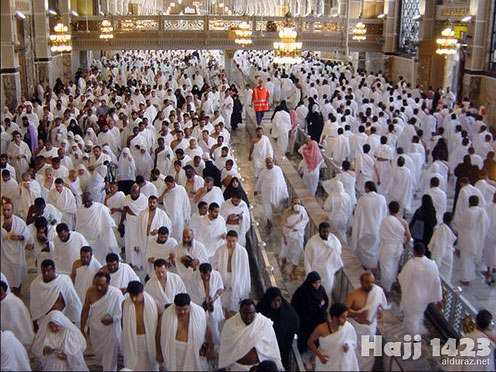Hajj The Largest Annual Pilgrimage of the World
Hajj or the annual pilgrimage to Mecca is one of the five pillars of Islam. Hajj consists of several rituals which symbolize the essential concepts of the Islamic faith, such as devotion to God, brotherhood, and unity. Hajj is required once in a Muslim’s lifetime if one is financially and physically able. Two to three million Muslims perform the pilgrimage annually. It is currently the largest annual pilgrimage in the world.
Guest Article by Benazir Fateh:
Hajj or the annual pilgrimage to Mecca is one of the five pillars of Islam. Hajj consists of several rituals which symbolize the essential concepts of the Islamic faith, such as devotion to God, brotherhood, and unity. Hajj is required once in a Muslim’s lifetime if one is financially and physically able. Two to three million Muslims perform the pilgrimage annually. It is currently the largest annual pilgrimage in the world. Hajj was made obligatory in the 9th year of Hijri (current year is 1431). Hajj has been made a pinnacle of worship in such an order that Muslims who gather to perform Hajj can praise their Lord and Master, be thankful for His blessings, and humbly pray to Him for the removal of their difficulties.

Hajj is a demonstration of the solidarity of the Muslim people, and their submission to God. The pilgrimage occurs from the 8th to 12th day of Dhu al-Hijjah, the 12th and last month of the Islamic calendar. Hajj is normally accompanied with several rites and rituals and has to be performed in a specific time period to be counted as Hajj. At other times of the year, the pilgrimage is called as Omrah/Umrah. In 2010, Hajj is expected to fall between November 14-18.
Upon arrival at the boundary of Mecca (about six miles from the Ka’ba), pilgrims enter the state of ihram (purity) in which they will remain throughout the hajj. Males entering this pure state don the ihram garments – two white, seamless sheets wrapped around the body – and sandals. This aspect of the rite not only signifies the state of holiness the pilgrims have entered, but it serves to contribute to a sense of equality and unity by removing visual indicators of class, wealth and culture. Women usually dress in white with only face and hands uncovered. After reaching Mecca, pilgrims head straight to Ka’ba and perform Tawaaf. Tawaaf is performed by going around Ka’ba seven times in a counter clock-wise direction. It is said that when one has his/her first glance at Ka’ba, whatever prayers one makes is granted. In the following days, pilgrims perform several rituals and spend their days praying in the house of God.
 photo by duraz via flickr
photo by duraz via flickr
Each year several Muslims from Udaipur go for Hajj. This year, almost 2000 people are going to Hajj from Udaipur. A long with Hajj, people generally make the trip to adjacent places like Medina, Jeddah in Saudi Arabia, Shaam, Karbala, Najaf in Iraq etc. for ziyarat. Upon their return they recount this experience as one of the most humble and gratifying experiences of their lifetime. They remember it as the unmatchable experience where they saw thousands of people from all over the world gather to celebrate their faith in God. It is not just a religious experience, but a spiritual one too where one starts looking at life from a different perspective and value it as a gift of God. The vices of human nature like greed, jealously, hate and the flaws of mortal life transform into virtues like love and affection for fellow humans, selfless devotion to God and appreciation for everything that He has bestowed upon us.
Benazir Fateh is 26 year old graduate student at Iowa State University. She is pursuing her PhD in Computer Engineering. Benazir likes reading, biking, cooking and writing.
To join us on Facebook Click Here and Subscribe to UdaipurTimes Broadcast channels on GoogleNews | Telegram | Signal


